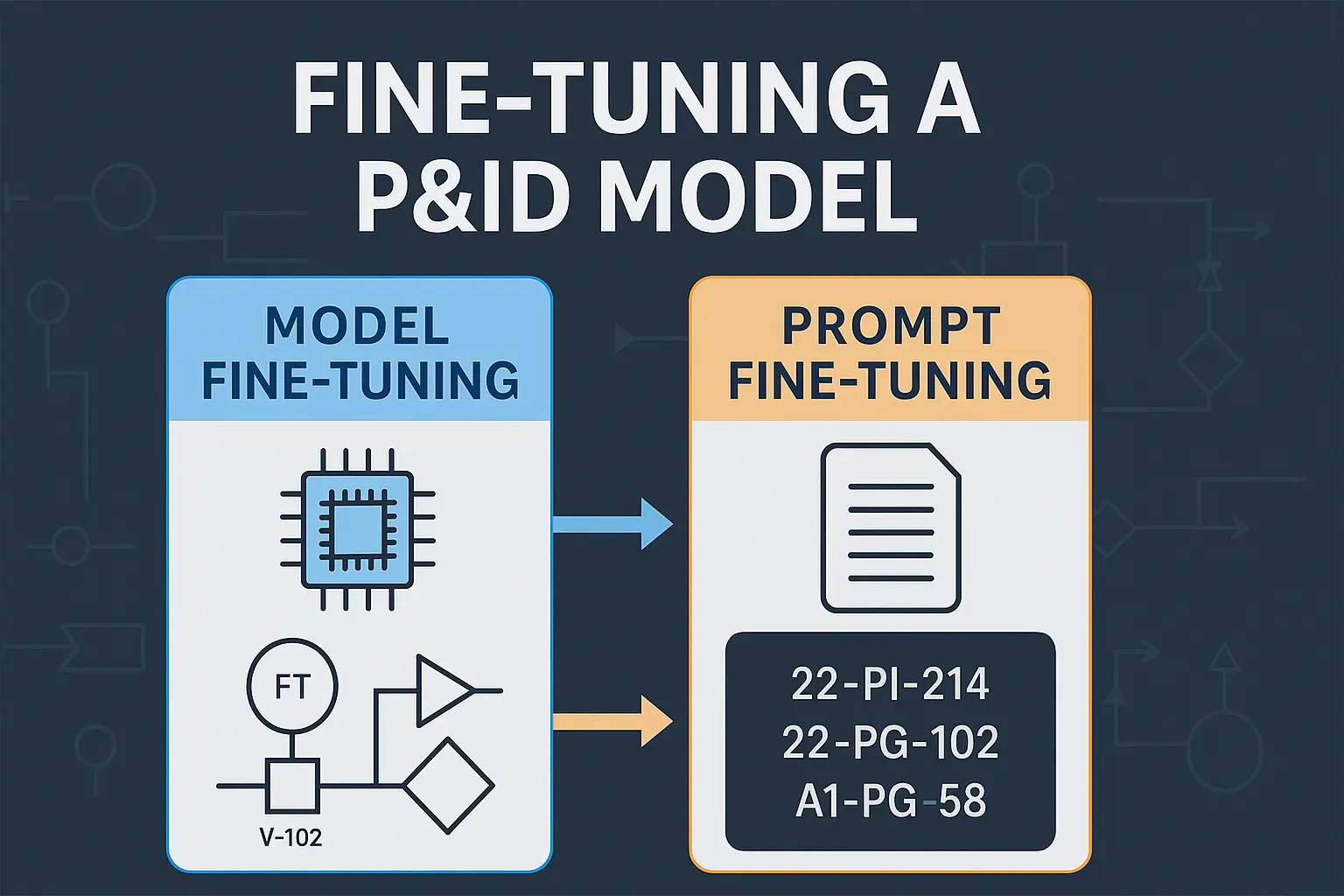
In the world of P&ID (Piping and Instrumentation Diagram) automation, accuracy matters.
Small differences in tag numbers, layout, or instrument annotations can have significant downstream impacts in cost estimation, procurement, and project execution.
When we set out to build a better way to automate P&ID annotation and correction, we faced a key decision:
Should we fine-tune a language model itself? Or should we fine-tune the prompts we give it?
This blog explores both approaches - their trade-offs, practical realities, and how we made local-first fine-tuning a cornerstone of our solution.
When engineers think about making AI smarter for their specific needs, there are two major paths:
| Path | Description |
|---|---|
| Model Fine-Tuning | Training or adjusting the model weights based on new data. The model “learns” permanently. |
| Prompt Fine-Tuning | Carefully structuring the examples and instructions given to the model, without changing the model itself. |
Both paths can work — but they serve different needs.
In model fine-tuning, we modify the model itself.
For example, we could take a general-purpose model like Phi-3-mini and teach it specific patterns seen in P&ID tag corrections.
Steps:
.gguf for use with Ollama){
"messages": [
{
"role": "system",
"content": "You are an annotation assistant. Correct symbols based on context and patterns observed in similar tags."
},
{
"role": "user",
"content": "Given the following symbols: 22-PI-214, 22-PG-102, A1-PG-58\nWhat should A1-TI-4B be corrected to?"
},
{ "role": "assistant", "content": "22-TI-48" }
]
}
Advantages:
Disadvantages:
Instead of changing the model, we change the instructions and examples we feed into the model.
Prompt: Given the following symbols: 41-TT-252, 41-PI-160, L1-FT-99\nWhat should L1-FT-99 be corrected to?
Response: 41-FT-99
We developed a dynamic system where:
Advantages:
Disadvantages:
Given the industries we work with (EPCs, manufacturing, operations), local-first was non-negotiable.
Our solution offers:
This provides maximum flexibility:
P&IDs are critical engineering documents. They are messy, diverse, and often customized project-by-project. A rigid, black-box AI system would fail in this environment. Giving users control — whether through dynamic prompt management or offering fine-tuned models when they’re ready — builds trust, ensures adaptability, and makes AI feel like a true extension of the engineering team, not a replacement for it.
Fine-tuning a P&ID model isn’t just about technical accuracy — it’s about giving users the power to shape the AI to their specific context.
By combining prompt fine-tuning for immediate flexibility and model fine-tuning for deeper specialization, we create a local-first platform that evolves alongside the needs of each project, plant, or organization.
Explore eAI or Book a Demo today.